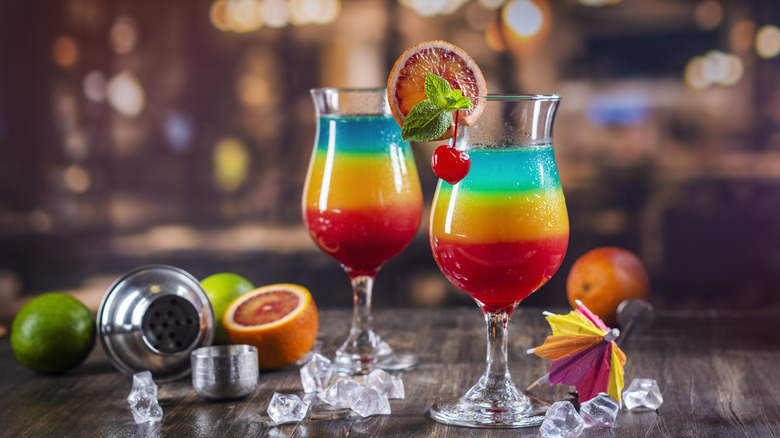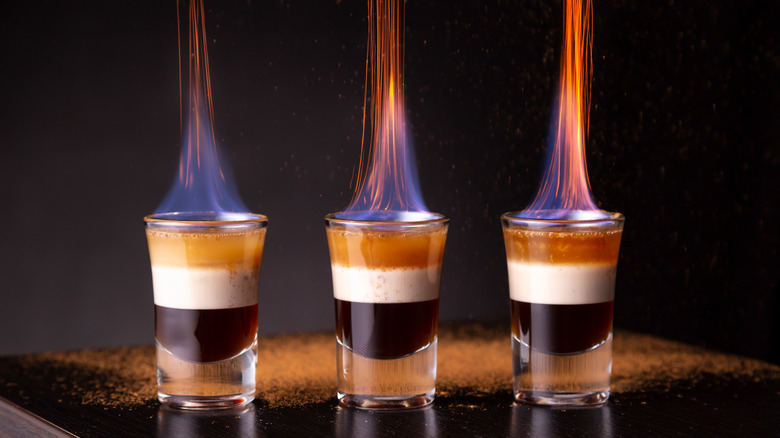Why The Weight Of Liquids Matters For Layered Cocktails
If you've ever made a layered cocktail, you know that getting the layers to stay separate can be a bit of a challenge. But did you know that the weight of the liquids you're using is actually one of the biggest factors in achieving the perfect layered drink? With a quick rundown of different types of liquors and liquids, you can understand why the weight of your liquids matters when making layered cocktails.
According to Wine Enthusiast, the more sugar a liquid has, the heavier it will be than those without sugar. Syrups, for example, tend to be very heavy components in cocktails. Liquor, which has very little sugar, tends to be among the lightest ingredients to go into a drink. And the higher the proof of the liquor, the lighter it will be compared to liquors with a lower proof. However, another common non-alcoholic ingredient, cream, might surprise you. It tends to rise despite its luscious density.
This is how the weight of liquids affects cocktails
The weight of different types of alcohol causes separation to happen based on each specific liquid's individual weight (via A Bar Above). When the heavier ingredients are placed at the bottom of the glass, they don't swirl into the lighter ingredients that are content to float on top (via Punch). The greater difference in the weight of each ingredient, the more distinct separation you'll get between each layer.
But using the weight of different liquids to create layered cocktails contributes to more than the visual appeal alone. It also means that the layers of liquids on the bottom will contribute to the overall flavor profile in each sip without getting lost in the components of the drink. So, as you can see, there's a lot that goes into making the perfect layered cocktail. But as long as you keep the weight of your liquids in mind, you should be able to achieve beautiful, crisp-looking layers that deliver a balanced cocktail.

